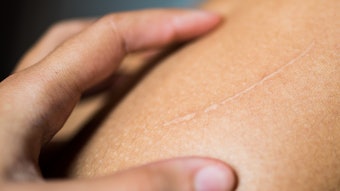Researchers at the University of Gothenburg and Chalmers University of Technology have investigated what happens when sun care products break down in the presence of UV radiation in attempt to better understand the association of increased contact allergy and photocontact allergy with this process. In the study, "Photodegradation of Dibenzoylmethanes: Potential Cause of Photocontact Allergy to Sunscreens," which appeared in the American Chemical Society's Chemical Research in Toxicology, researchers found that arylglyoxales, one of the degradation products, are highly allergenic. According to the researchers, this explains why some people are allergic to creams that contain dibenzoylmethanes, specifically 4-tert-butyl-4′-methoxy dibenzoylmethane.
Global warming and a change in sunbathing habits have brought an increase in the number of cases of skin cancer worldwide, according to the report. To prevent the increase of skin cancer, sunscreen use has been encouraged; however, the study notes that increased sunscreen use has also led to an increase in contact allergy and photocontact allergy to these products. This reaction is uncommon and symptoms include itchy, eczema-like rashes. The treatment is to avoid the substance causing the allergy, i.e. sunscreens.
In the described study, the allergenic potential of photodegraded 4-tert-butyl-4′-methoxy dibenzoylmethane was evaluated by screening the arylglyoxals and benzils formed for their sensitizing capacity via the murine local lymph node assay (MLLNA). The arylglyoxals were found to be strong sensitizers and highly reactive toward the nucleophile arginine, indicating the immunogenic hapten−protein complex could be formed via an electrophilic−nucleophilic pathway.
In addition, varying the electron-withdrawing or -donating capacity of the arylglyoxal had no significant impact on the sensitizing or the electrophilic power of arylglyoxals. Thus, a change in the substitution pattern of the parent dibenzoylmethane did not influence the sensitizing capacity of the products formed from them upon photodegradation.
Also, the combined studies of benzils, using the MLLNA and a cell proliferation assay, indicated that the benzils are cytotoxic rather than allergenic. The researchers therefore concluded there is a strong indication that photocontact allergy to dibenzoylmethanes is caused by the arylglyoxals formed during photodegradation. According to the researchers, the personal care industry could use this information to create sunscreen products that do not cause allergic reactions.










